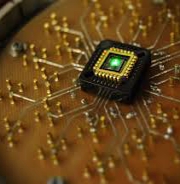IISc researchers develop self-powered UV photodetector for self-charging energy storage devices
The researchers from the Indian Institute of Science (IISc), Bengaluru have developed a cost-effective, high-performance, self-powered UV photodetector.
The self-powered UV photodetector can use the harvested optical energy for direct self-charging of energy storage devices such as supercapacitor. It can also be used for operating electronic devices in the absence of external power source.
What is Photodetector?
Photodector is a device capable of sensing (detecting) or responding to electromagnetic energy, typically light by using the electrical effect of individual photons.
What researchers have developed?
- The researchers have developed the photodetector by integrating semiconducting vanadium doped zinc oxide (VZnO) nanoflakes with a conducting polymer.
- The zinc oxide (ZnO) is the base material for UV detection which can be doped with vanadium to produce photodetectors that are self-powered.
- The photodetector has superior performance in terms of faster detection of photo signals in the order of milliseconds even when UV light intensity is low.
How it works?
- When doped with vanadium, the microstructure of ZnO changes from nanorods to closely-packed nanoflakes. It causes increase in the surface area to the volume of the material.
- It also creates surface defects within the band gap of ZnO, which helps in trapping the UV radiation that falls on the nanoflakes.
- These nanorods are one-dimensional and cause more light reflection from top surface. When UV light enters into pores it undergoes multiple reflections and finally gets absorbed.
What are potential benefits?
- The nanoflake (VZnO) produces five times more photocurrent, compared with ZnO, which generates only 40 nA photocurrent.
- Once these nanoflakes are hydrogenated, the current generation capacity further increased to 1,000 nA.
- When these hydrogenated nanoflakes exposed to UV light, they detect photo signal within milliseconds, which is nearly 100 times faster than conventional UV photodetectors.
- VZnO nanoflakes structure has 98% light harvesting efficiency which is much higher than 84% seen in ZnO.
Month: Current Affairs - October, 2016


